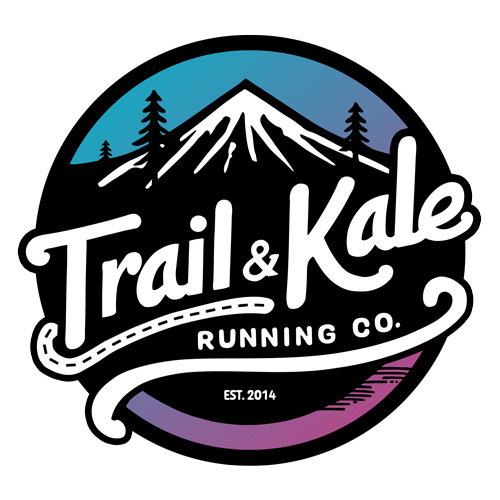Welcome to our ultimate beginners running guide. If you have never run before, or haven’t run for a long time, then this article is for you and tells you everything you need to know!
This guide explains the benefits of running, how to start running, tips to help you get started with running, and how you can train to run 5k non-stop with our tried-and-tested couch to 5k beginner runner’s training plan.
Before we get started, thank you to REI for sponsoring this beginner’s guide to running – we appreciate your support! REI is a fantastic place to gear up for running, as they sell everything you need to hit the paths and trails in comfort (and style, of course), and offer excellent customer service whether you shop at an REI Co-op store locally, or buy from REI.com online.
The benefits of running
Running offers a multitude of benefits that cater to both your physical and mental well-being. Not only is it a straightforward and accessible form of exercise, requiring just a good pair of running shoes and a safe path, but can also significantly contribute to weight loss, cardiovascular health, and strengthening bones and joints.
The mental benefits of running are perhaps even more compelling than the list of physical health benefits. Running encourages the release of endorphins, leading to the well-known ‘runner’s high’ that significantly boosts mood, reduces stress levels, and enhances your connection with the outdoors, allowing for natural vitamin D intake.
One of the greatest things about running is that for many, embarking on a running journey and achieving personal milestones can dramatically boost your self-confidence and transform your outlook on life. It equips you with the mental resilience needed to tackle various life challenges, making running not just a physical activity, but a transformative experience for both body and mind.
How to start running
Assuming I’ve convinced you to keep reading now you know about the many potential benefits of running, here are the 4 things to do before you start to work on your new running habit.
- Invest in running shoes and essential gear
- Find a suitable place to run
- Set a running goal to work towards
- Consult your doctor
1. Invest in running shoes and essential gear
The first step is to invest in a good pair of trainers that have been designed for running in, and some basic running gear that will help you be comfortable and enjoy developing your running routine.
Running shoes have a different design from casual lifestyle sneakers and will help support your feet and body as you run, reducing the impact on your body. So, if you only buy one piece of running gear, make sure it’s some well-fitting footwear from a good running shoe brand. For more advice on finding a suitable pair, visit our guide to the best running shoes or your local REI store for in-person advice.
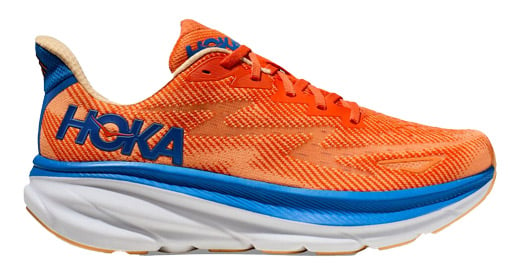
Often overlooked, your running socks are almost as important as your footwear. Don’t wear your regular everyday cotton socks – there is no faster way to foot discomfort and blisters. Any of the running socks featured in our running socks buyer’s guide make a great choice.
Most women are going to want a good sports bra to hold everything in place when they run. Look for sports bras marketed as being for ‘high-impact‘ activities, and designed for sports including running, to ensure they have enough support to cope with the movement of running workouts – for our women’s editor’s top picks, see our guide to the best sports bras for running.
While you can get away with running in any t-shirt and comfortable shorts or leggings for your first few runs, you’ll be more comfortable and enjoy running more if you wear clothing that will wick sweat away from your body. This will help you keep cool and dry as you run, and reduce issues such as chafing. A windproof or waterproof jacket is also important for running in cooler, wet and windy weather.

2. Find a suitable place to run
Ideal running locations are traffic-free, such as local parks with paths, footpaths and bike trails away from vehicles, off-road trails, and wide sidewalks with minimal crossings. A treadmill is also an option, although not as scenic. Here are some more tips to help find running trails near you.
To discover great running locations, ask fellow runners or refer to running guides. Using the Strava app can also aid in finding popular routes and tracking your runs, with its map feature highlighting running ‘hot spots’. Additionally, Google Maps offers a way to scout new areas by selecting ‘terrain’ or ‘satellite’ view and then ‘biking’ to identify potential paths, paying attention to those marked as ‘trails’ for pedestrian-friendly options.
3. Set a running goal to work towards
Starting a new running routine can be unnecessarily hard if you don’t set a goal to work towards, because setting a goal gives you a clear focus and target to aim for, and that can make the world of difference to successfully developing your new running habit.
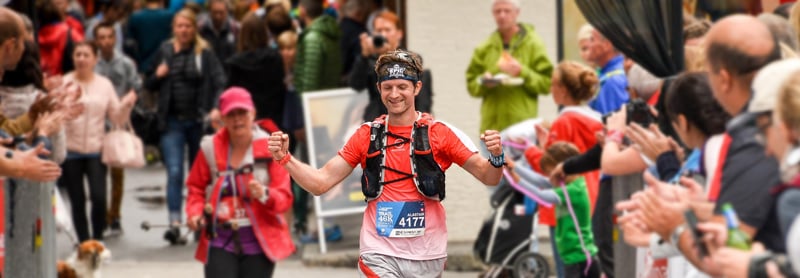
How about running your first 5k?
One of the most popular, and highly achievable goals for beginner runners, is to build up to running a 5k. 5k stands for 5 kilometers, which works out to 3.3 miles. It is also the same as the 5000m distance you will see runners race in the Olympics and other athletic competitions.
You don’t need a running coach, you can do this on your own by tracking your route, time and distance using a running watch or phone app, or by signing up for one of your local 5k fun runs so you have a target race day to train for.
It is realistic for most new runners to go from doing no running to being able to run a 5k, non-stop, within 8 weeks. Yes, really! Before you know it you’ll then be setting your sights on training for a 10k, running a half marathon (or even training for a full marathon) – you heard it here first 🙂
This is where our Couch To 5k Training Plan comes in. The plan is a weekly running schedule that’s simple and easy to follow, with specific workouts for you to do each week, to build up to completing a 5k in one go.
This running program uses what’s commonly referred to as the ‘run walk method’, which has you doing run-walk intervals, meaning you start off with brisk walking breaks between short periods of just a few minutes of running, gradually increasing the amount of running you do in one go. This run-walk method allows you to keep each workout achievable and manageable, while working up to longer distances and building your fitness, strength and endurance each week.

It’s also important to follow a 5k training plan that builds up your weekly mileage to longer distances and duration gradually, with rest days in between. This approach helps you stay injury free by not over-training and allowing your body to recover between runs.
4. Consult your doctor
If you feel it’s necessary, consult your doctor before you start running (or any new exercise habit).
Tips to help you get started with running
In addition to the advice above and following a suitable plan like our Couch to 5k training plan, these tips will help you get the most out of your running workouts.
Pace yourself so you can go the distance
Starting slow and pacing yourself is crucial for endurance running. It builds your ability to run longer without getting out of breath.
I’ll let you into a little secret: the first 5-6 minutes of EVERY run are hard work. Even experienced runners find the first few minutes challenging, but starting at a conversational pace can make it easier and improve your speed over time.
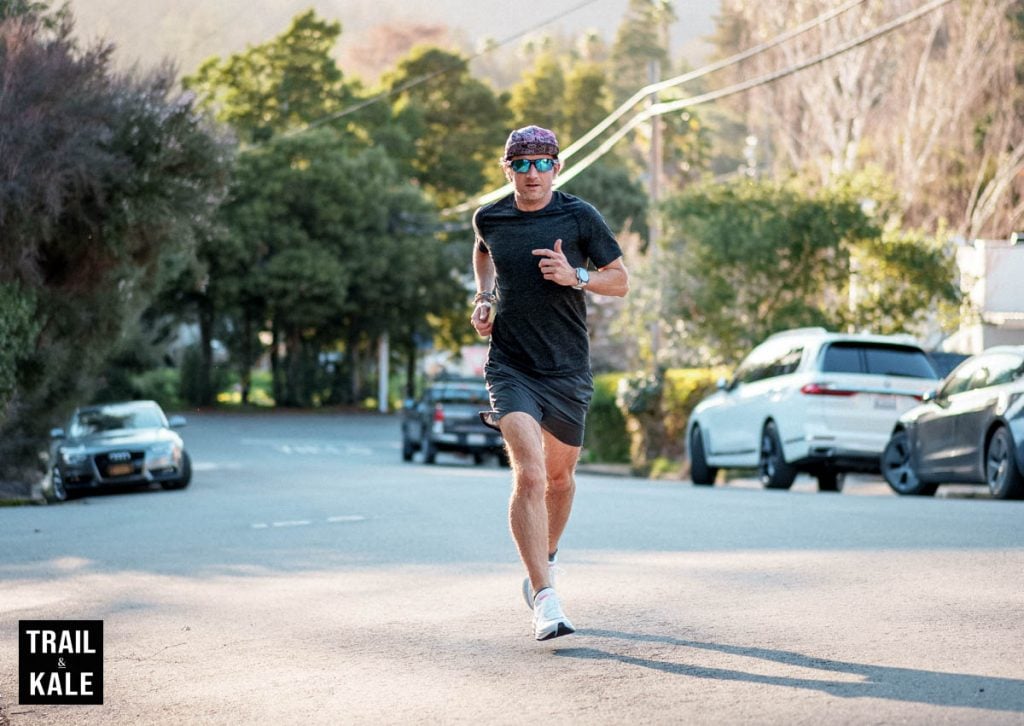
Here are some tips on how to breathe while running, which is a useful read for new runners and experienced runners alike.
Run with proper running form
Thinking about having good running form as you run will help you become a more efficient runner and reduce your likelihood of getting running overuse injuries. Having good form will also help you run faster.
Your form includes everything from your overall posture while you run and your running cadence (how many times your feet hit the ground in a minute), to how your foot strikes the ground relative to the position of your body.
If your foot hits the ground too far ahead of your body, then this is referred to as ‘heel striking’ and can make you more prone to getting running injuries such as shin splints.
To learn more about what this means and how to achieve good form, read our guide to proper running form, which is full of tips to help you.
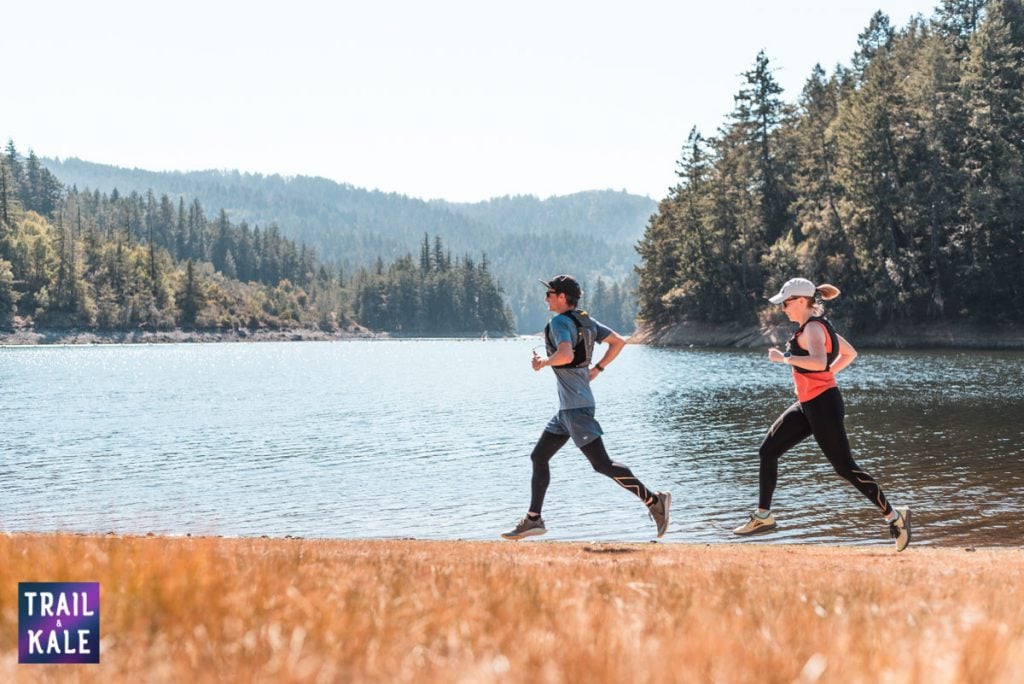
Run with a friend or group
Running with others boosts motivation, helps you learn, and keeps running enjoyable. It’s a great way to stay committed and socialize.
Stretch before and after
It’s normal for your muscles to be a little sore the day after a run, or even two days afterwards, when you’re using your body in new ways! However, stretching can really help reduce post-workout soreness.
Incorporate a few minutes of dynamic stretches in your warm-up and static stretches post-run to minimize soreness and reduce injury risks.
Read our guide to the best running stretches for a list of suitable stretches and watch the video below for a quick overview of how to do each stretch.
Know when to drink water
Carry water for hydration, especially for runs longer than 10k. Avoid sports drinks for runs under an hour to prevent unnecessary calorie intake.
Consider a running hydration pack or running belt (aka, a running fanny pack) if you’re somewhere warm or want an easy way to carry water with you while you run.
What to eat before a run
For runs under an hour, eating beforehand isn’t usually essential. If needed, opt for something light like half a banana 45 minutes prior to running.
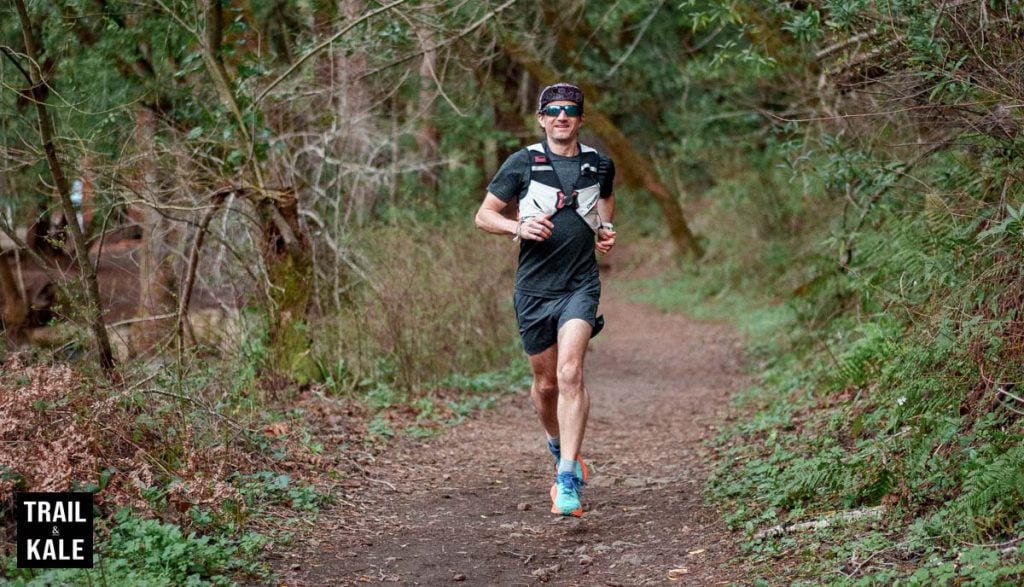
Try different types of running
Explore various running forms like trail running to keep your routine exciting and engage with nature. Head over to our beginner’s guide to trail running to learn more about what makes this version of the sport so great.
Remember cross training is important, too
Incorporate cross-training activities like yoga or gym workouts on non-running days to build strength and avoid overtraining.
Try our Couch To 5k Training Plan
Now you’ve read this beginner runners guide, head over to our Couch to 5k training plan for our simple weekly running program that will get you running a 5k in 8 weeks (or less)!
